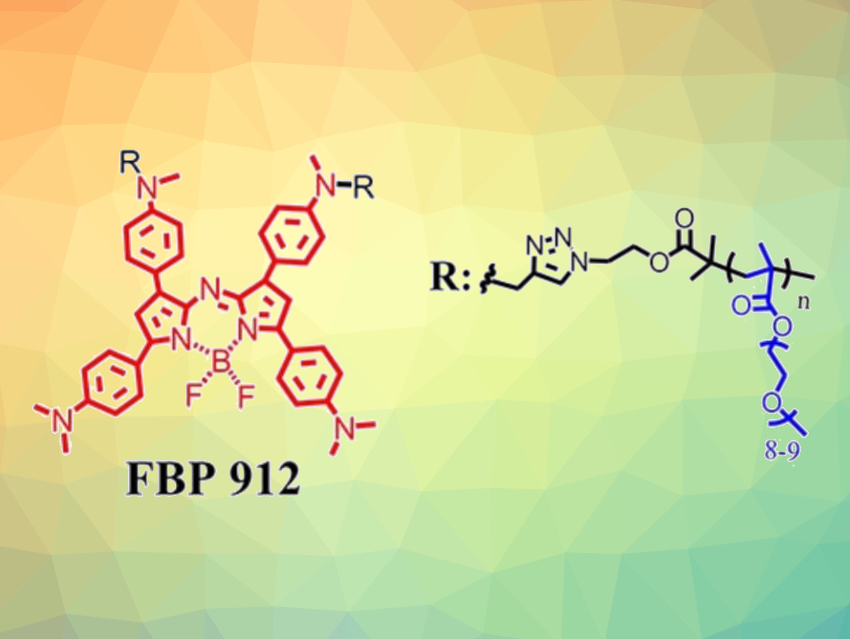Fluorescence imaging in the near-infrared range of the spectrum (NIR-II, 900-1700 nm) can be useful for noninvasive bioimaging in vivo with high resolution. However, it is still a challenge to fabricate renal-clearable (i.e., passing through the kidneys) NIR-II fluorophores with high brightness and long blood-circulation time for the early diagnosis of kidney disease.
Fan Zhang, Fudan University, Shanghai, China, and colleagues have developed a general method for the synthesis of renal-clearable aza-boron-dipyrromethene (aza-BODIPY)-containing macromolecular probes, called Fudan BDIPY Probes (FBP, example pictured). Four different probes were prepared via the radical polymerization of oligo(ethylene glycol) dimethacrylate (OEGMA500) using different aza-BODIPY atom-transfer radical polymerization (ATRP) initiators.
The synthesized probes show tunable emission from 725 to 1025 nm, high renal-clearance efficiencies (ca. 65 % excretion through the kidney within 12 h), and prolonged blood circulation times of t1/2 ≈ 6.1 h. They provide about ten-fold higher brightness than traditional NIR-II renal-clearable probes. The FBP probes could provide good performance for the non-invasive diagnosis of, e.g., renal ischemia/reperfusion injury (damage caused by a temporary impairment of the blood flow to the kidneys) or renal tumors.
- A Bright, Renal‐Clearable NIR‐II Brush Macromolecular Probe with Long Blood Circulation Time for Kidney Disease Bioimaging,
Chenzhi Yao, Ying Chen, Mengyao Zhao, Shangfeng Wang, Bin Wu, Yiwei Yang, Dongrui Yin, Peng Yu, Hongxin Zhang, Fan Zhang,
Angew. Chem. Int. Ed. 2021.
https://doi.org/10.1002/anie.202114273




